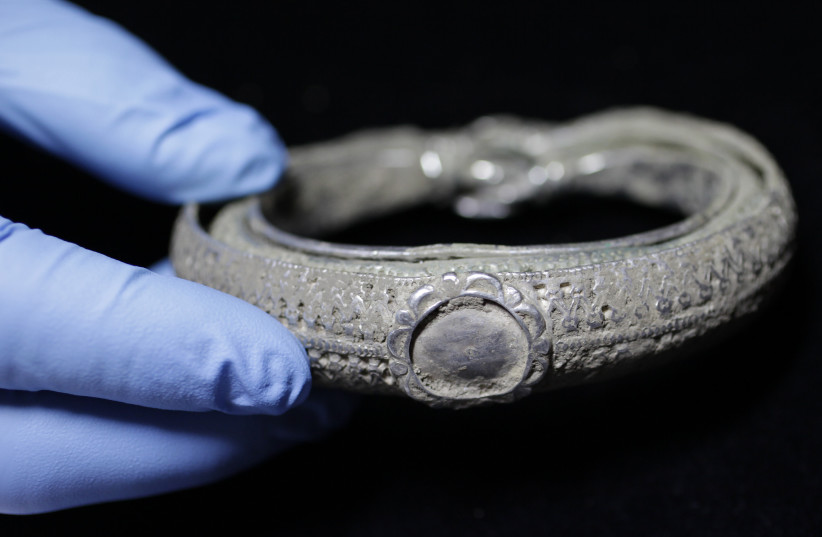Hundreds of Viking, Germanic, and Arabic silver coins and a silver ring were discovered by a young girl playing with a metal detector in Denmark, a local museum announced on Friday.
The little girl was playing in a cornfield located 5 miles from Viking fortress Fyrkat when she made the discovery.
“A hoard like this is very rare," Lars Christian Norbach, director of the North Jutland Museum. The coins will be displayed at the museum and the girl has received an undisclosed amount of compensation for her find.
The museum said that the coin dates back to the 980s. This timeline would coincide with that of the Viking fort’s construction by King Harald Bluetooth, stated Norbach.
"The two silver treasures in themselves represent an absolutely fantastic story, but to find them buried in a settlement just eight kilometers from Harald Bluetooth's Viking castle Fyrkat is incredibly exciting," museum archaeologist and curator Torben Trier Christiansen said in a statement.

The coins and other finds
The coins featured a cross which, according to the museum’s statement, indicated that the coins are from late within King Bluetooth’s rule.
It is believed that King Bluetooth “introduced the cross coins as propaganda in connection with his Christianization of the Danes - i.e. as a further spread of Harald's message on the great Jelling stone, which was erected around the year 965”
In addition to the coins, the young girl unearthed 70 grams of silver.
The silver comprises of “two ornately braided decorated balls on a small piece of cut silver rod, which was originally part of an unusually large ring pin.”
The museum stated that it was likely the ring belonged to a bishop or king, based on the high quality and quantity of the silver. The statement added that the ring had likely been looted during a raiding expedition
